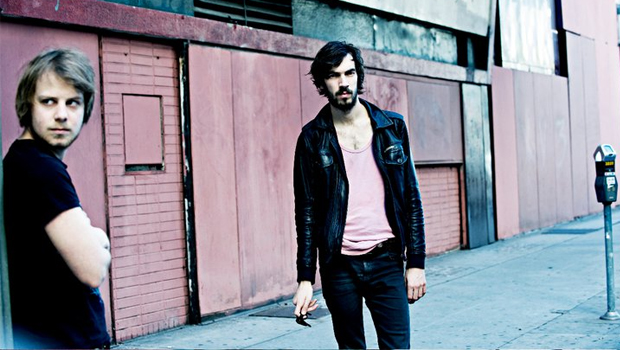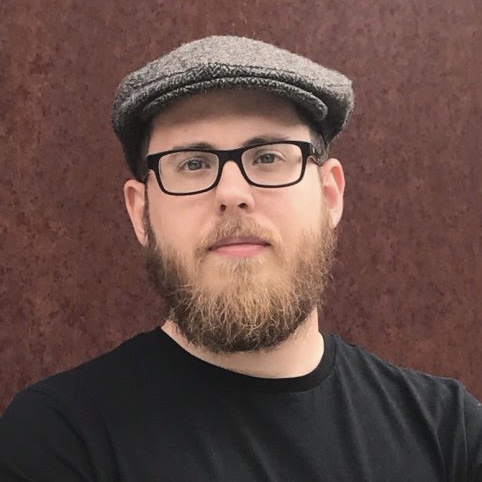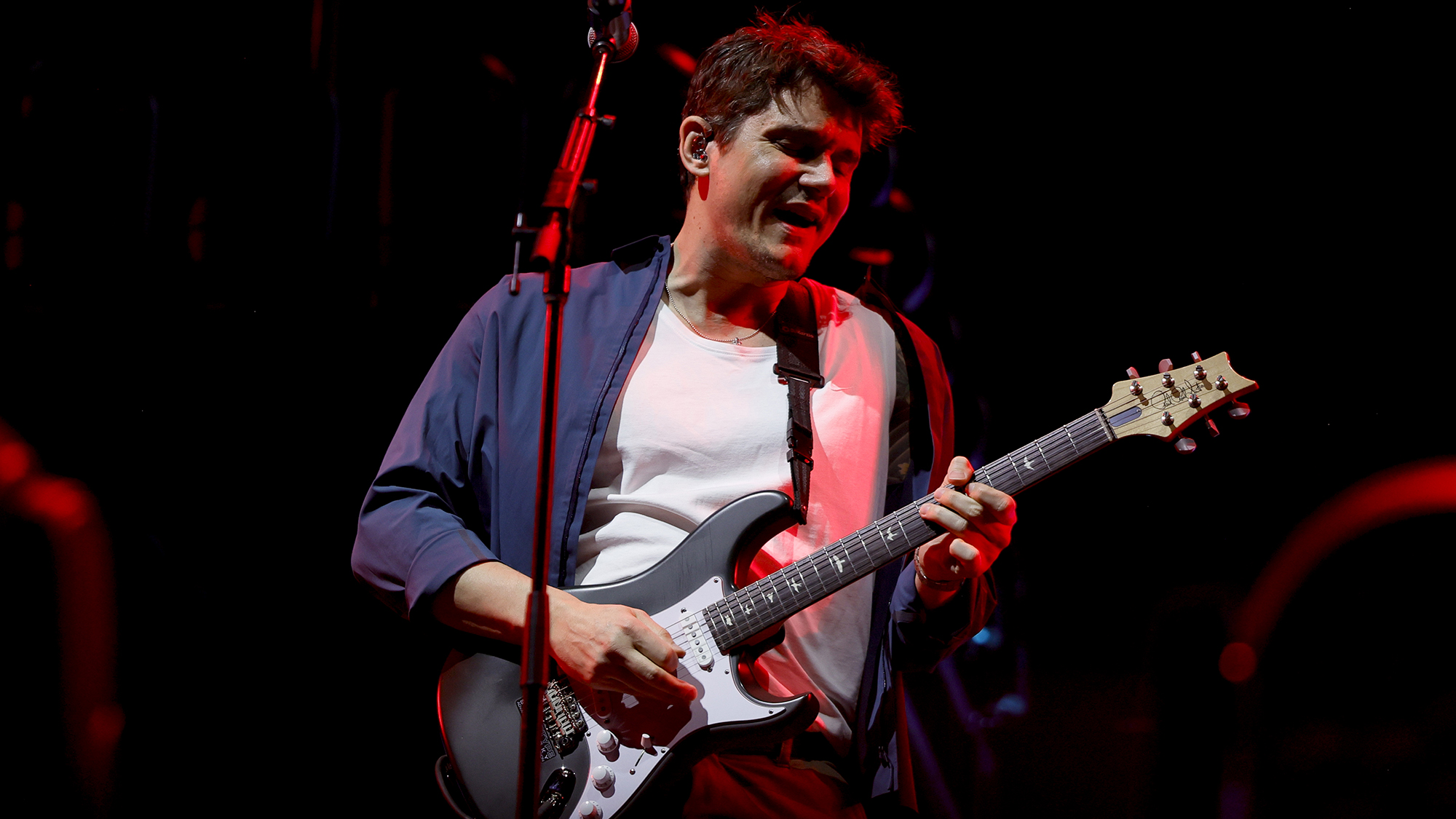
Listening to eclectic garage-rock sound of Black Box Revelation, you might be tempted to peg them as being either from posh London or the ultra-hip revival scene of Brooklyn. You'd be wrong on both counts.
Hailing from Brussels, Belgium, the duo of guitarist/vocalist Jan Paternoster and drummer Dries Van Dijck manage to combine the catchiest elements of the Black Keys and Oasis with a grab bag of influences that range from hip-hop to folk to good old-fashioned blues.
Black Box Revelation just kicked off an intimate run of theater shows as direct support for Jane's Addiction of their "Theater of the Escapists" tour, which aims to hit smaller, older venues across the country.
I recently caught up with Paternoster to talk about the tour, guitars and the rock scene in Belgium.
GUITAR WORLD: What does it mean to you to be hitting the road with Jane's Addiction on a tour with such an interesting concept behind it?
We are super excited to start this tour! It's a great opportunity for us to play with such a legendary band in this special setup: beautiful theaters in loads of cities where we haven't been before.
We've toured a lot through the States already. I think we've been to almost every state besides maybe five, but this time we hit a lot of cities and theaters where we haven't been yet, which makes it even more exciting. We are really curious to see how the new audiences react. I think it's going to be great.
Get The Pick Newsletter
All the latest guitar news, interviews, lessons, reviews, deals and more, direct to your inbox!
Based on your sound, a lot of fans might be surprised to find out that you're from Belgium. How is the garage rock scene over there?
You can't really speak of a big garage rock scene in Belgium. Our country is so small that it's more focused on smaller local music scenes, mainly with loads of unknown bands and a couple bigger fish who get a lot of airplay on national radio. Ghent probably has the biggest local music scene, with Antwerp in second place. In Brussels, our hometown, most bands are French speaking, and because of the language barrier we're not really familiar with that scene. We were -- and still are -- one of the only Flemish Brussels bands, which makes us really proud. It's cool to be the mascot of the capital.
Aside from rock bands, BRR seem to take a good deal of influence from a lot of other genres, even hip-hop. What sort of music is inspiring you these days?
We get inspired by loads of genres, and even beyond that, just by everything we see while traveling and living our lives. I think right now, by crossing the States so much, we've been listening to a lot of pop music. [laughs] But that's not the stuff we listen to at home. I love playing vinyl on my record player at home, mainly the more bluesy kind of music. A cool band I discovered a couple of months ago is Timber Timbre, great music to hang out and chill to. Great atmosphere.
Next to that, I listen a lot to the great ones like Howlin' Wolf and Neil Young -- especially his On the Beach record. Another great artist I got to know because a friend from Murfreesboro, Tennessee, was listening to him is Michael Hurley. Really cool stuff!
Who were the bands/musicians that first made you want to pick up a guitar?
I guess that was The Datsuns, a rock and roll band from New Zealand, and The Kills with their Keep On Your Mean Side album. I saw both bands playing on one of the biggest festivals in Belgium when I was 12 years old. I was so amazed by their extraordinary live performances that I wanted to do the same. And it just feels great to be touring all over the world now, like a dream come true. The funny thing is that we played that festival where I fell in love with music five times already. Isn't that great?
As the sole guitarist in a two-man band, what steps do you take to beef up your guitar sound?
I started playing live shows with only one combo amp and no effect pedals. Right now, six years later, I'm playing on a three-amp guitar rig with a dozen effects pedals! By playing more shows and evolving as a guitar player, I started to discover different sounds and started experimenting with my wall of sound. You wouldn't be able to do this in a four-piece band. The other band members would get mad because of my guitar sound taking up too much space. [laughs] That's why it's so great to play as a duo; the possibilities are endless.
Talk about your live rig a bit. What guitars are you taking on the road with you?
I have two rigs: one here in the States and another almost identical one in Europe. Here, I'm playing a Gibson Firebird V, a custom (Belgian-made) Strat and a James Trussart Steelmaster. Those James Trussart guitars are my favorite, and I have four of 'em in Europe. James is a good friend of ours; his guitars play amazing. It's so much fun to have endless possibilities while building a new one.
Next to that, I've got a couple of Gibson ES models and some other, more rare guitars. A guitar is my favorite instrument; it's great to feel the different neck finishes and shapes, and every guitar has its own character. Some of them play really smooth, some of them are a hassle to play, but that might just be more exciting. Depends what you like, right?
What does your pedal board look like?
I split my guitar signal and send it through three different effect series. Overall, I'm using a lot of the main effect pedals, just looking for the one with the right sound color that I like, or fits my sound best. Those I like most are the EH POG, the Colorsound fuzz box, that big green delay pedal from Line6 [Editor's Note: The DL4] and the Phase 90. Maybe a good reverb is a winner as well, but I don't have one on my board right now. Still looking for the right one!
Your latest album, My Perception, sounds like a more relaxed record for the band. Did this have to do with getting to work with your producer, Alain Johannes, in his home studio?
It definitely has to do with that. Al is such a lovely guy and such an unbelievable good musician that we felt really comfortable in the studio. Also, because me and Dries have so much more experience than when we recorded album one and two.
We didn't bring any of our own gear to the studio, except for my guitar pedals, because they are so important to my way of playing the guitar. His studio is great: drums in the veranda, guitar amps in his master bedroom and cables all over the house, straight to his control room. Nothing more than we needed, except loads of foreign and crazy instruments from India, China and all over the world. On "New Sun," we used a UFO-shaped instrument from Switzerland. His studio was not just a home studio. It really felt like home when we were recording, and I guess that's why you feel this record is more relaxed than the previous ones.
Do you prefer working in a small space like that as opposed to a big recording studio?
Yes, definitely! I think it made us more focused on playing and writing music than in a big, clean studio atmosphere. Our music needs to sound as pure and raw as possible, and the best way to do that is to record in a small studio with a comfortable feeling. It makes everything more authentic, and that's what we want to show our fans: the real us, and the purity of our music.
What were your main guitars in the studio for My Perception?
I brought one of my own guitars to the studio, an old Hofner Galaxy something. I don't know the exact name, but it worked out differently. I ended up playing all of Al's guitars and not using my Hofner. Most songs were recorded on a semi-acoustic Harmony from the '50s. Alain gave me this guitar afterwards. I really couldn't believe it. That was one of the best presents someone ever gave to me!
Next to that, I used a Motor Ave Belair for the song "Shadowman," a modified Fender Jazzmaster with the same pickups Brian May plays, and a couple of James Trussart's guitars.
How does your songwriting process work? Based on some of the longer instrumental sections, it definitely sounds like a lot of the songs are born out of improvised jams.
I always come up with a new idea, record it in demo version, really rough, on a four-track cassette recorder. Once the structure gets clear, we start jamming and fooling around with all the ideas. Depending from song-to-song, this can turn into hour-long jams and improvisation. A good example of this is "Sealed with Thorns," which turned out in a seven-and-a-half-minute version on the album. It's just so great and pleasing to forget about everything and let those instruments tell their own stories.
Black Box Revelation are on tour with Jane's Addiction. Get all the tour dates here. Their latest album, My Perception is out now.
Josh Hart is a former web producer and staff writer for Guitar World and Guitar Aficionado magazines (2010–2012). He has since pursued writing fiction under various pseudonyms while exploring the technical underpinnings of journalism, now serving as a senior software engineer for The Seattle Times.
“I’m inspired”: John Mayer has been spotted playing a Neural DSP Quad Cortex live for the first time – could this be his new amp modeler of choice?
“I use a spark plug to play slide. It's a trick Lowell George showed me. It gets incredible sustain – metal on metal”: In the face of sexist skepticism, Fanny's June Millington carved a unique six-string path, and inspired countless players in the process


![A black-and-white action shot of Sergeant Thunderhoof perform live: [from left] Mark Sayer, Dan Flitcroft, Jim Camp and Josh Gallop](https://cdn.mos.cms.futurecdn.net/am3UhJbsxAE239XRRZ8zC8.jpg)








